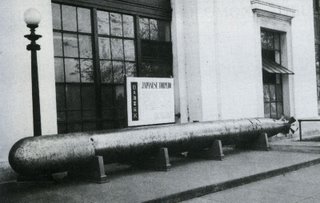Long Lance I.

This is coolbert:
"In the first six to twelve months of a war with the United States and Great Britain I will run wild and win victory upon victory." - - Admiral Yamamoto.
And this was true. During the first six months of World War Two in the Pacific theatre, the Japanese did "run wild".
Victory after victory on land, in the air, and ON THE SEA.
Japanese naval forces, in surface engagements during the first six months of the war, proved to be more than a match for the combined ABDA [American, British, Dutch, Australian] navies at the Battle of the Java Sea and also against American naval forces during the early months of the Guadalcanal campaign.
A scenario would play itself out again and again, to the astonishment and distress of Allied naval commanders.
Both sides would make ready for combat at sea, and advance on one another. Prepared for battle.
The Japanese, however, would choose the time and place for the engagement. A time that was ALWAYS AT NIGHT!! Even before the advent of ship-borne radars, the Japanese had specially trained personnel, selected for superior vision, employing superior optics, that were able to out-perform any electronics of the day. Spot allied ships before the allies could spot them [the Japanese]. Allow the initiative to pass to the Japanese. An initiative that would be maintained by the use of superior night-fighting naval tactics, regularly practiced and preferred.
Tactics that included the use of a potentially war-winning weapon.
The Long Lance torpedo. [called Type 93 by the Japanese.]
A torpedo, developed with secrecy and earnest in the years prior to the war. A torpedo far superior to those employed by the allied navies.
"The Type 93 was quietly developed in Japan in the 1930s"
"the most advanced torpedo in the world at the time"
A torpedo that was a major technological advancement for it's day. A torpedo that could out-range the big guns found on any battleship of any navy of the era.
"The Type 93 had a maximum range of 40,000 meters . . . the 16 inch /L45 guns mounted on the then-current US Colorado-class battleships fired a . . . shell to an absolute maximum range of 39,600 yards (36,210 m)."
A torpedo, fired from the deck of a surface vessel, that gave any Japenese ship from the size of a destroyer upward a marked advantage over allied counter-parts.
"it was usually launched from the decks of surface ships, but some submarines also had deck-mounted launchers . . . The Japanese Navy outfitted many of its destroyers and cruisers with the Type 93 torpedo."
That incredible range of the Long Lance [40,000 meters], allowed the Japanese to commence hostilities and gain the initiative. Fire a mass volley of Long Lance torpedoes that would cause either casualties among the allied ships, or force same to take evasive action and break formation.
The Japanese would then close on the allied ships firing naval guns when in range, all the while continuing to launch further volleys of Long Lance, maintaining the initiative they had gained. This tactic was especially effective against the coalition forces of ABDA at the Java Sea battle. Coaltions do not fight well. Eisenhower knew this. This rule holds true at sea as well as on land.
THE LONG LANCE WAS A WEAPON FOR WHICH THE ALLIED NAVAL COMMANDERS DID NOT HAVE A COUNTER OR A REPLY!!
Even when warned about the Long Lance, Admiral Callahan, commander during the initial nightime surface fleet engagements at Guadalcanal, saw a number of his ships go to the bottom from torpedo hits. Hits NOT from submarines, but from surface ships, Callahan losing his life as well! The Long Lance was a weapon you just could not take measures against.
[these night-time surface engagments in the "Slot" at Guadalcanal resulted in what became known as "Iron Bottom Bay", so many U.S. and Japanese warships went to the bottom in an almost casual fashion.]
It was only after Coral Sea and Midway that it became apparent that surface engagments of the type as seen at Java Sea and later at Guadalcanal had become passe'. Naval aviation launched from aircraft carriers was THE WAY to go. The combat line of ships dueling with naval gunfire salvoes was a thing of the past. The Long Lance was potent still, but ships just did not fight anymore for the rest of the war [but with rare exceptions] as they did in 1942.
coolbert.
Labels: Torpedoe

0 Comments:
Post a Comment
Subscribe to Post Comments [Atom]
<< Home